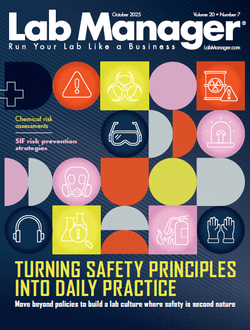Amid calls for racial and social justice nationwide, businesses and educational institutions are grappling with how to adopt more inclusive organizational practices, including more diversified hiring. However, recruitment teams and strategic leaders often blame their lack of a diverse workforce on a lack of diverse applicants. A large study of recruitment data suggests a simple and efficient way of increasing diversity in applicant pools: have more diverse recruitment committees and leadership teams.
The study, led by researchers at the University of Houston's (UH) Center for ADVANCING Faculty Success and published online in the Journal of Applied Psychology, found that when the search committee chair for a job is a woman, 23 percent more women apply for the job than when the search committee is led by a man. What is more, over 100 percent more underrepresented minorities (URM), such as Hispanics and Blacks, apply for the job when the recruitment is led by a URM chair as opposed to a non-URM.
In the context of workplace diversity, the concept of homophily—an affinity for similar others—has developed a bad reputation for furthering systemic barriers to opportunity for minority groups. In fact, homophily, if utilized wisely, can be leveraged to increase the representation of women and underrepresented minorities, according to Maryam A. Kazmi, a PhD candidate at UH and the study's first author.
"There is something that women and URM recruiters are doing differently than men and majority group members that encourages more women and URM applicants to apply for a job," she said.
The study, an analysis of three years of recruitment data for tenure-track faculty jobs at a large, public research university, shows that one of the ways in which women and URM recruitment leaders are affecting applicant pools is by appointing more women and URM to participate on the search committees they lead. These women and URM search committee members, together with the leads of recruitment teams, disseminate job ads more widely, specifically to more women and URM potential applicants who then apply in greater numbers. But what motivates them to do so?
Christiane Spitzmueller, professor of psychology at UH and a study coauthor, said that women and URM recruitment leads and team members rely on their own experiences in developing applicant pools.
"Women and underrepresented minority recruiters have likely experienced the same structural barriers to entry and career progress that the potential applicants may face. Their own experiences of inequity may make them likely to have a soft spot for similar others facing similar issues. This might motivate women and minority recruiters to work harder to ensure that they do what they can to ensure that more women and URM are made aware of the job opening and are encouraged to apply," she said.
The researchers make a number of policy recommendations for human resource professionals, supervisors, and other company executives to ensure more diverse applicant pools, which include:
- Posting the job ad on women/minority-specific websites.
- Cooperating with the organization/institution's diversity and inclusion offices to develop a diverse list of candidates to contact.
- Posting the position ad through department chair listservs.
- Calling women or colleagues from historically underrepresented backgrounds to get possible candidate names/recommendations on who to recruit.
- Using personal networks to recruit.
- Including language in the job ads promoting the diversity of the department and university to prospective candidates.
The study found that women and URM recruiters tend to use different strategies to affect applicant pool diversity, says Juan Madera, study coauthor and professor at the Conrad N. Hilton College of Hotel and Restaurant Management at UH.
Lab Management Certificate
The Lab Management certificate is more than training—it’s a professional advantage.
Gain critical skills and IACET-approved CEUs that make a measurable difference.
"We found preliminary evidence that women recruiters are more likely to use personal networks to identify and target women/URM applicants, whereas URM recruiters are more likely to use more formal strategies of increasing applicant pool diversity. For example, cooperating with the institution's diversity and inclusion offices to develop a diverse list of candidates to contact and posting the job ad on women and minority-specific websites," he said.
"Women and URM continue to be underrepresented in workplaces. The diversification of applicant pools constitutes an important step for broadening the participation of women and URM in the workforce," says Paula Paula Myrick Short, senior vice president for academic affairs and provost at the University of Houston. "This study provides evidence of practical steps that organizations can take to increase their applicant pool diversity."
- This press release was originally published on the University of Houston website











